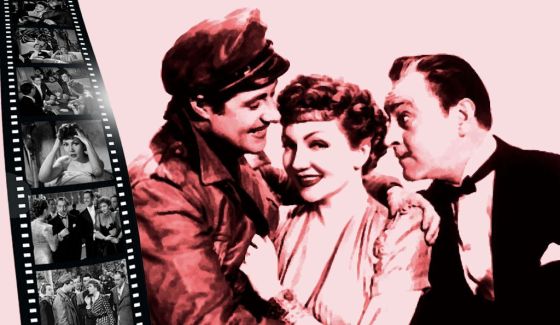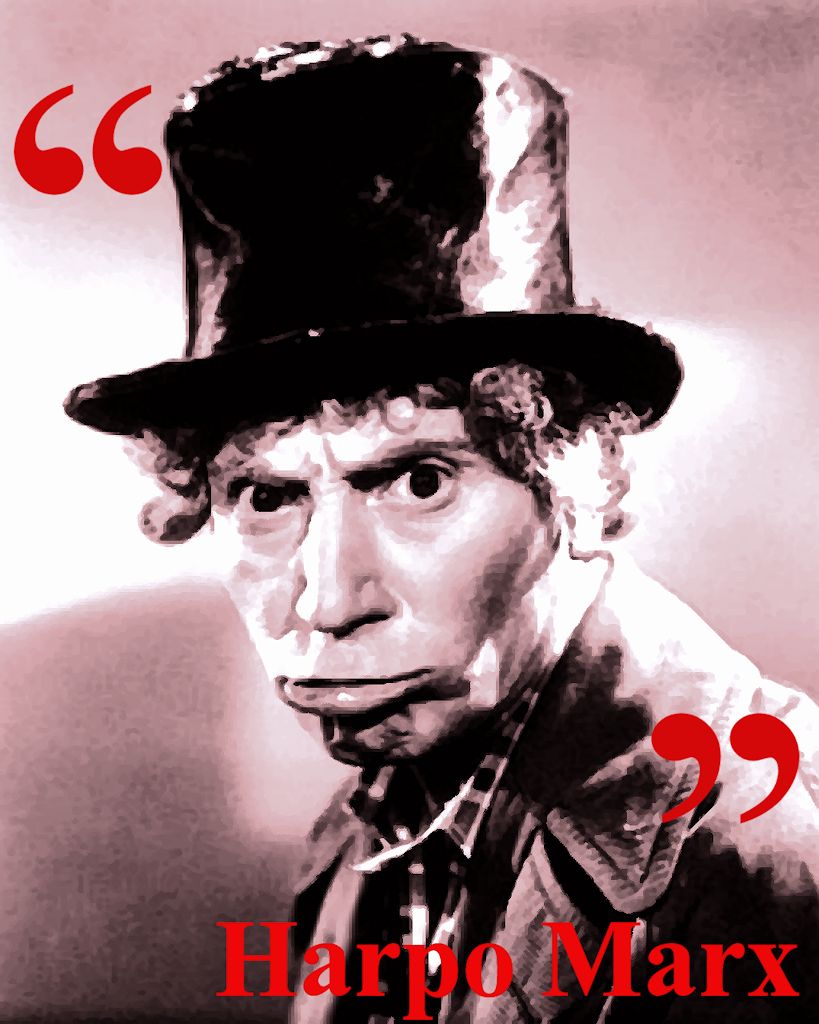 Midnight (La Signora di Mezzanotte) – USA 1939
Midnight (La Signora di Mezzanotte) – USA 1939
Directed by: Mitchell Leisen.
Starring: Claudette Colbert; Don Ameche; John Barrymore; Mary Astor; Francis Lederer.
Every Cinderella has a Midnight…
In spite of the outbreak of WWII in Europe, 1939 has been one of the most outstanding years in Hollywood: the golden year of the Golden Age. That same year “Midnight”, a brilliant and funny screwball comedy directed by Mitchell Leisen, starring Claudette Colbert and reminding, because of its subject and setting, to many Ernst Lubitsch’s comedies, was released in American cinemas.

Midnight -1939 (Photo credit: Wikipedia)
In fact the story is set in a carefree Paris before the war and shows a group of true and false aristocrats spending their days and nights in futile activities and love affairs. The heroine of this story is an American girl called Eve Peabody (Claudette Colbert), an unlikely Cinderella but a real “gold digger”, just arrived in town from Monte Carlo where she lost at the roulette all the money she earned when she was a showgirl. In a rainy night, with nothing with her except for the elegant evening gown she’s wearing, an empty purse and a pawn ticket (for her suitcase that is in a pawnshop in Monte Carlo), Eve convince the Hungarian-born taxi driver Tibor Czerny (Don Ameche) to help her to find a job in a Night Club. There’s no job, but obviously Tibor immediately falls in love so at the first occasion Eve, who’s a very smart girl, jumps out of the taxi and accidentally crashes in a very elegant soirée where she met the most unlikely fairy godmother: the very wealthy Monsieur Flammarion (John Barrymore) who, in just one night, will transform her into a Baroness, nonetheless the Hungarian Baroness Czerny (you’re right, this is not a coincidence). From now on her mission will be to separate Mme Flammarion (Mary Astor), the “fairy godmother’s” wife, from Jacque Picot (Francis Lederer) a young, charming and also wealthy ladies’ man she is shamelessly in love with. But this mission won’t be easy because Tibor is determined to find Eve and to make her fall madly in love with him this time…
Even if “Midnight” may seem a bit weak in comparison with other famous films released in 1939, just think about Gunga Din, Beau Geste, Wuthering Heights, The wizard of Oz, Mr Smith goes to Washington, Dark Victory, Ninotchka, The Women and, of course, Gone with the Wind, this film has a place in film history. “Midnight” is the film that marked the first collaboration between the screenwriters duo Billy Wilder and Charles Brackett (a partnership that produced 14 screenplays from Lubitsch’s “Bluebird’s Eight Wife” in 1938 to “Sunset Blvd” in 1950) with the director Mitchell Leisen, a very important collaboration in motion picture history indeed. It seems in fact that Wilder detested Leisen (one of the most prominent directors at Paramount who had started his career in cinema as a costume designer for Cecil B, DeMille), that (doing his worst) he despised him because homosexual, that he consider him mediocre and in the end that he was particularly irritated at the only idea that such a little gifted director could change something in his script. Probably all that, mixed with ambition (of course), drove Wilder, a couple of years and a couple of films with Leisen later (“Arise, my love” in 1940 and “Hold Back the Dawn” in 1941), to direct his screenplays himself.
Anyway whether it is thanks to the screenwriters duo, to the director or even to the always great and charming Claudette Colbert (who was by that time one of the most prominent actresses at Paramount and one of the most paid stars in Hollywood), the film works like magic, even despite John Barrymore who caused some trouble with his alcohol addiction. In fact, he couldn’t even memorize his lines and cue cards had to be kept off screen (you can clearly watch him reading his lines in some scene). As it used to happen in many Lubitsch’s films, also in “Midnight”, released in March 1939 a few months before the outbreak of WWII, audiences could enjoy once again a funny trip to Fantasy Europe, a world that was going to disappear forever, inhabited by very wealthy and breezily amoral aristocrats who had nothing to do except find a very clever and (almost)good hearted American girl in search of her Prince Charming that could poke fun at them while fixing up their lives.
Maybe “Midnight misses the Lubitsch’s magic touch, anyway to watch it again will be great fun, I promise (and if you’ve never seen it, try HERE).
A few related movies yo could also like (titles are links, click them to watch a clip or the trailer):
Trouble in Paradise – USA 1932 Directed by: Ernst Lubitsch. Starring:Herbert Marshall; Miriam Hopkins; Kay Francis; Edward Everett Horton.
Nothing Sacred – USA 1937 Directed by: William A. Wellman. Starring: Carole Lombard; Fredric March; Walter Connolly.
Bluebeard’s eight wife – USA 1938 Directed by: Ernst Lubitsch. Starring: Claudette Colbert; Gary Cooper; Edward Everett Horton; David Niven.
Gentlemen prefer blondes – USA 1953 Directed by: Howard Hawks. Starring: Marilyn Monroe; Jane Russell; Charles Coburn.
Love in the afternoon – USA 1957 Directed by: Billy Wilder. Starring: Audrey Hepburn; Gary Cooper; Maurice Chevalier.
Pocketful of miracles – USA 1961 Directed by: Frank Capra. Starring: Bette Davis; Glenn Ford; Hope Lange; Edward Everett Horton; Peter Falk.
Radio Days – USA 1987 Directed by: Woody Allen. Starring: Diane Wiest; Mia Farrow; Danny Aiello.
Per ogni Cenerentola arriva la Mezzanotte…
Il 1939, nonostante lo scoppio della Seconda Guerra Mondiale in Europa, è stato un anno eccezionale ad Hollywood: l’anno d’oro dell’Era dell’oro. Quello stesso anno è uscito nelle sale americane “La signora di Mezzanotte”, una commedia sofisticata frizzante e divertente diretta da Mitchell Leisen che ha per protagonista Claudette Colbert e che ricorda nei temi e nell’ambientazione le commedie di Ernst Lubitsch.
La storia si svolge infatti nella spensierata Parigi pre-bellica tra veri e finti esponenti di un’aristocrazia annoiata che ha nelle girandole amorose uno dei suoi passatempi preferiti. L’eroina della nostra storia è l’americana Eve Peabody (Claudette Colbert), un’improbabile Cenerentola ma un’autentica “cercatrice d’oro”, arrivata in città da Monte Carlo dove ha perso al tavolo verde tutti i soldi guadagnati facendo la ballerina di rivista. In una notte piovosa (molto piovosa…), provvista solo dell’elegante abito da sera che indossa, di una borsetta vuota e della ricevuta di un banco di pegni di Monte Carlo (dove si è impegnata la valigia), Eve convinceTibor Czerny (Don Ameche), tassista di origine Ungherese, ad aiutarla accompagnandola nella ricerca di un lavoro da un Night Club all’altro. Del lavoro nessuna traccia ma, ovviamente, Tibor si innamora follemente, così Eve, che è una ragazza con la testa sulle spalle, alla prima occasione se la da a gambe levate fuggendo dal taxi e riuscendo ad imboscarsi in una (vera) soirée elegante dove incontra la più improbabile delle fate madrine: il ricchissimo Monsieur Flammarion (John Barrymore) che in una sola notte la trasforma in una Baronessa, nientemeno che la Baronessa Ungherese Czerny (si avete indovinato, non è una coincidenza). La sua missione d’ora in avanti sarà separare Madame Flammarion (Mary Astor), la moglie della sua “fata madrina”, dall’affascinante Jacque Picot (Francis Lederer), il ricco playboy di cui è spudoratamente invaghita. Ma non sarà facile avere successo perché Tibor la sta cercando con ogni mezzo e questa volta è determinato a farla innamorare di lui …
Anche se sbiadisce un po’ al confronto con altri film usciti in quel 1939, basti citare tra i tanti Gunga Din, Beau Geste, Cime Tempestose, Il mago di Oz, Mr Smith va a Washington, Tramonto, Ninotchka, Donne e naturalmente Via col vento, questo film ha un posto nella storia del cinema. “La Signora di Mezzanotte” è la prima collaborazione tra la coppia di sceneggiatori Billy Wilder e Charles Brackett (un sodalizio iniziato l’anno precedente con la sceneggiatura di “L’ottava moglie di Barbablù”, film diretto da Ernst Lubitsch, e che si chiuderà nel 1950 con “Viale del Tramonto”) ed il regista Mitchell Leisen, in incontro fondamentale nella storia di Hollywood. Pare infatti che Billy Wilder detestasse Leisen (che aveva iniziato la carriera nel cinema come costumista per i film di Cecil B. DeMille ed era uno dei registi più apprezzati alla Paramount), che lo disprezzasse con forza (dando il peggio di sé) perché omosessuale, che lo considerasse una specie di incapace e che fosse particolarmente irritato da ogni suo tentativo di modificare i copioni. Probabilmente fu tutto questo, unito ad una sana ambizione, che spinse Wilder ,un paio d’anni e due film insieme a Leisen dopo (“Arrivederci in Francia” del 1940 e in “La Porta d’Oro” del 1941) a decidere che era giunto il tempo di dirigere da sé i suoi copioni.
“La Signora di Mezzanotte” comunque, che sia merito della premiata coppia di sceneggiatori, del regista o della sempre bravissima Claudette Colbert (che non a caso all’epoca era l’attrice di punta della Paramount nonché una delle star più pagate di Hollywood), funziona alla perfezione nonostante le difficoltà create dalla presenza di John Barrymore che, causa abusi alcolici, non riusciva a memorizzare le battute ed era costretto a leggerle da dei cartelli piazzati sul set (in alcune scene lo si vede chiaramente muovere gli occhi da un lato all’altro mentre dice le battute proprio come se stesse leggendo). Come sarebbe successo con un film di Lubitsch, grazie a questo film, uscito nel marzo del 1939 alcuni mesi prima dello scoppio della guerra, il pubblico americano ancora una volta poteva volare con la fantasia in un mondo che stava per essere cancellato, un’Europa da operetta popolata di nobili ricchissimi e allegramente amorali così indaffarati a non far nulla da esser sempre pronti a farsi prendere per il naso dalla prima americana di passaggio, ovviamente dotata di gran senso pratico e di un cuore d’oro (molto ben dissimulato) e in cerca di un bel principe azzurro di cui innamorarsi perdutamente.
Forse a “La Signora di Mezzanotte” manca il magico tocco del maestro Lubitsch, ma vi assicuro che comunque rivedendolo vi divertirete un sacco (e se non l’avete mai visto e capite bene l’inglese potete provare QUI).
Alcuni film collegati che potrebbero piacervi (i titoli sono link, con un click potrete vedere il trailer o una scena del film):
Mancia Competente – USA 1932 Diretto da: Ernst Lubitsch. Con:Herbert Marshall; Miriam Hopkins; Kay Francis; Edward Everett Horton.
Nulla sul Serio – USA 1937 Diretto da: William A. Wellman. Con: Carole Lombard; Fredric March; Walter Connolly.
L’Ottava Moglie di Barbablu – USA 1938 Diretto da: Ernst Lubitsch. Con: Claudette Colbert; Gary Cooper; Edward Everett Horton; David Niven.
Gli Uomini Preferiscono le Bionde – USA 1953 Diretto da: Howard Hawks. Con: Marilyn Monroe; Jane Russell; Charles Coburn.
Arianna – USA 1957 Diretto da: Billy Wilder. Con: Audrey Hepburn; Gary Cooper; Maurice Chevalier.
Angeli con la Pistola – USA 1961 Diretto da: Frank Capra. Con: Bette Davis; Glenn Ford; Hope Lange; Edward Everett Horton; Peter Falk.
Radio Days – USA 1987 Diretto da: Woody Allen. Con: Diane Wiest; Mia Farrow; Danny Aiello.







